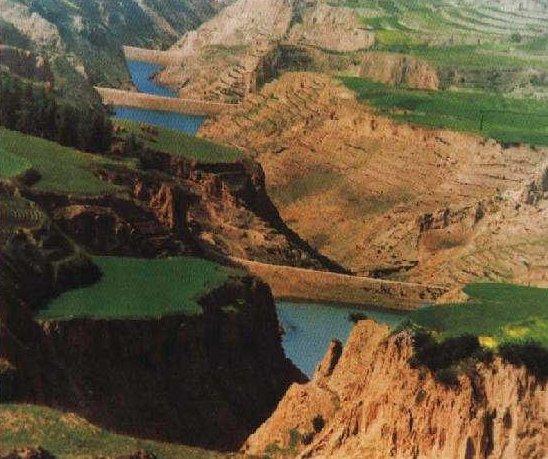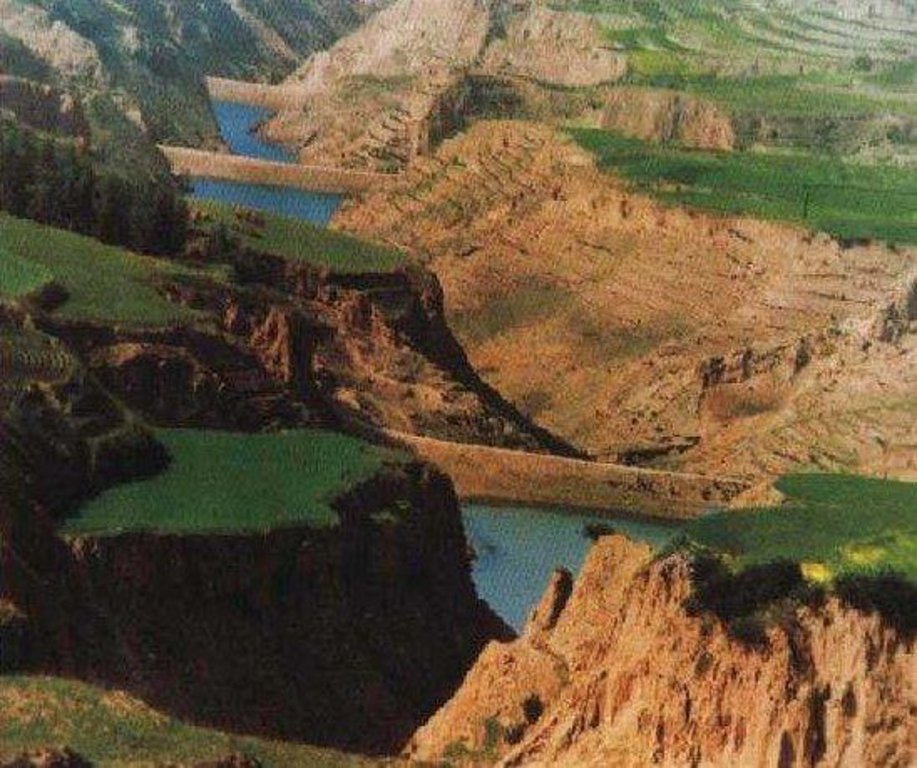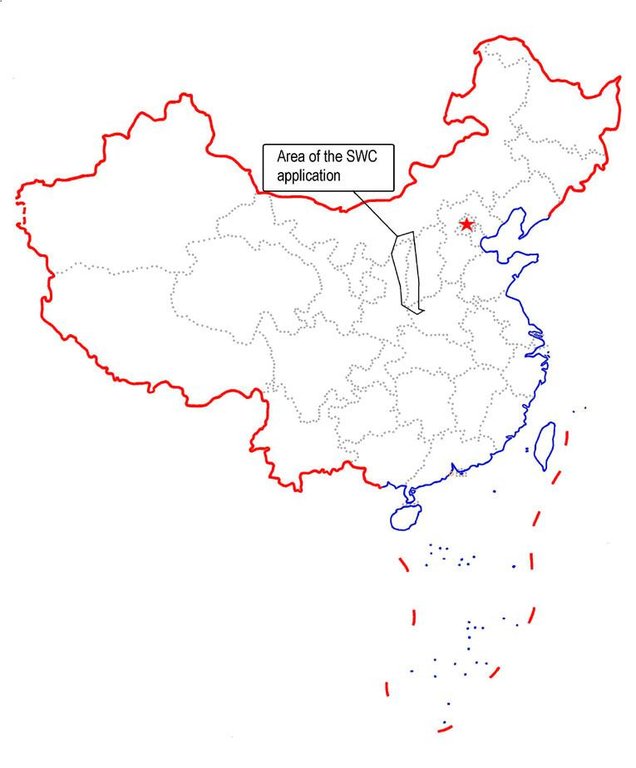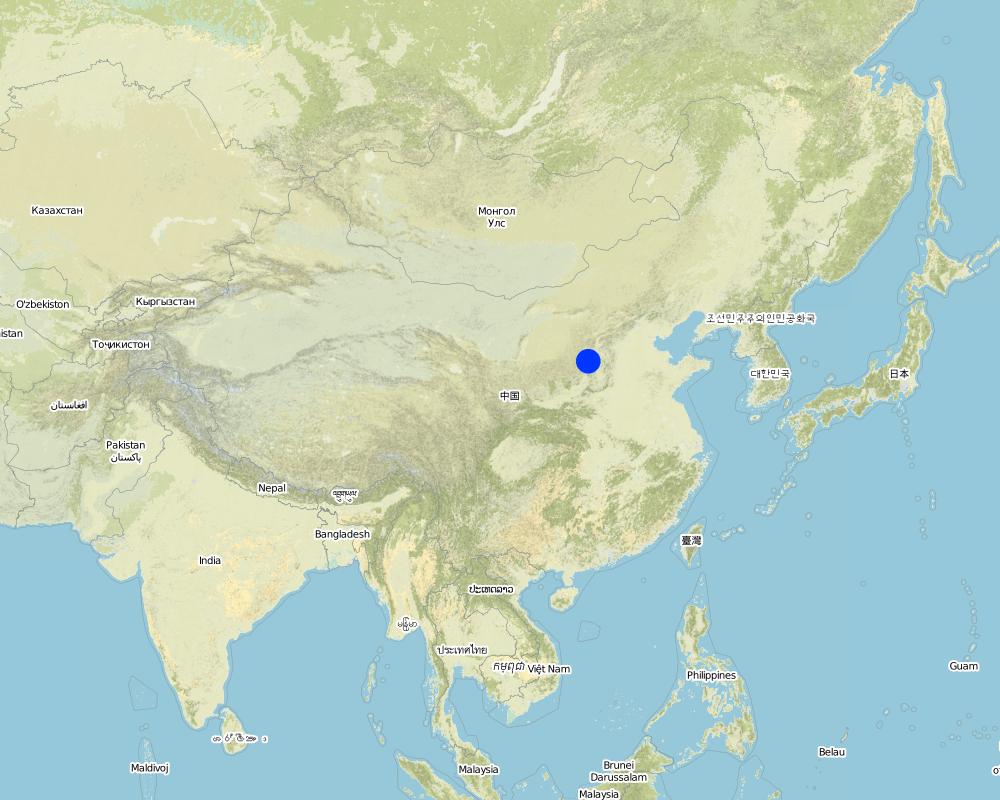Falling Water Dam [Chine]
- Création :
- Mise à jour :
- Compilateur : Yan ZHANG
- Rédacteur : –
- Examinateur : Laura Ebneter
approaches_2400 - Chine
Voir les sections
Développer tout Réduire tout1. Informations générales
1.2 Coordonnées des personnes-ressources et des institutions impliquées dans l'évaluation et la documentation de l'Approche
Spécialiste GDT:
Nom du ou des institutions qui ont facilité la documentation/ l'évaluation de l'Approche (si pertinent)
Department of Resources and Environmental Science, Beijing Normal University (Department of Resources and Environmental Science, Beijing Normal University) - Chine1.3 Conditions relatives à l'utilisation par WOCAT des données documentées
Le compilateur et la(les) personne(s) ressource(s) acceptent les conditions relatives à l'utilisation par WOCAT des données documentées:
Oui
1.4 Références au(x) questionnaire(s) sur les Technologies de GDT
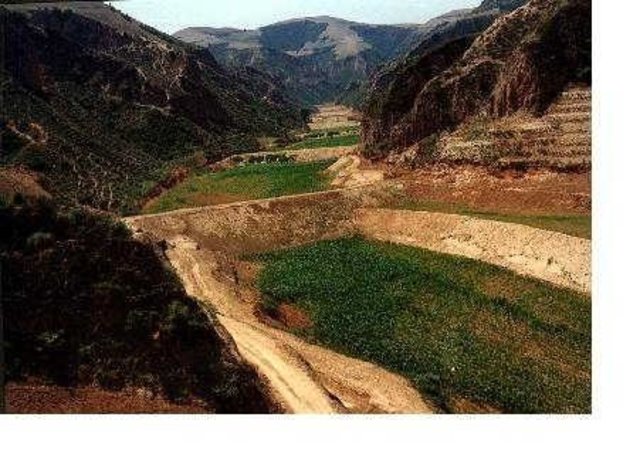
Auto-Flowing Slurry Dam [Chine]
Auto-flowing slurry dams is filled with dense slurry by water flow from upland to maintain eroded soil particles and runoff.
- Compilateur : Yan ZHANG
2. Description de l'Approche de GDT
2.1 Courte description de l'Approche
The falling water dams are widely built in the middle reach of the Yellow River, the typical dams are filled with dense slurry by water flow from upland. The approach is implemented mainly by government investment.
2.2 Description détaillée de l'Approche
Description détaillée de l'Approche:
Falling water filled dams distribute widely in the middle reaches of the Yellow River. They are used to store water, wrap sediment which results from soil and water loss. On the Loess Plateau, in addition to the conditions of deep gully and steep slope, earth above the top of the dams can be used to build dams. First, soil is loosed with squirt guns, explosion or manually digging. Then, water is pumped up to the loose earth so as to rush the soil down along transporting ditch, turning the soil into dense mud, to dams level surrounded by tamped banks. Under the press of gravity, the mud dehydrates, consolidates and becomes uniformly dense body of the dams. Compared with dams in other areas, the water power filled dams in the Yellow River basin are characterized by much denser mud, uniform particles and body texture, smaller transect of dams body, and wide applicability to soil materials such as sand soil, loess soil and weathering residue. The types of dams have widely applied to build middle and small reservoirs and silt arresters in the middle reaches of the Yellow River, playing an important role in agricultural production and reduction of sediment into the Yellow River.
2.3 Photos de l'approche
2.5 Pays/ région/ lieux où l'Approche a été appliquée
Pays:
Chine
Région/ Etat/ Province:
Shanxi, Shaanxi, etc.
Map
×2.6 Dates de début et de fin de l'Approche
Indiquez l'année de démarrage:
1950
Date (année) de fin de l'Approche (si l'Approche n'est plus appliquée):
2005
2.7 Type d'Approche
- traditionnel/ autochtone
2.8 Principaux objectifs de l'Approche
The objectives of the approach are to control soil & water loss so as to reduce flood; to make more crop land.
The SLM Approach addressed the following problems: The main existing issues are unreasonable land use planning and low use rate; Lower standard of SWC design and poor quality in construction which would lead to flood danger; low administrative level and economic benefits.
2.9 Conditions favorisant ou entravant la mise en œuvre de la(des) Technologie(s) appliquée(s) sous l'Approche
disponibilité/ accès aux ressources et services financiers
- entrave
Only when government invests, the technology can be implemented
Treatment through the SLM Approach: investment
cadre juridique (régime foncier, droits d'utilisation des terres et de l'eau)
- favorise
The existing land ownership, land use rights / water rights helped a little the approach implementation: Because land resources belongs to state and land user can lease the land.
3. Participation et rôles des parties prenantes impliquées dans l'Approche
3.1 Parties prenantes impliquées dans l'Approche et rôles
- gouvernement national (planificateurs, décideurs)
- organisation internationale
3.2 Participation des exploitants locaux des terres/ communautés locales aux différentes phases de l'Approche
| Participation des exploitants locaux des terres/ communautés locales | Spécifiez qui était impliqué et décrivez les activités | |
|---|---|---|
| initiation/ motivation | auto-mobilisation | rapid/participatory rural appraisal; The approach is a traditional way to harvest water and wrap soils, SWC applied land users easy to understand and accept it if some subsidy being obtained. |
| planification | interactive | workshops/seminars; After a program granted, implementing agency and local communities working together. |
| mise en œuvre | soutien extérieur | responsibility for major steps; In practice, local communities are the major part to manager and carry out. |
| suivi/ évaluation | passive | interviews/questionnaires; When monitoring procedures are clear, the local communities could do this and evaluate. |
| Research | interactive | Only can give some suggestions or questionnaire. |
3.4 Prises de décision pour la sélection de la Technologie/ des Technologies
Indiquez qui a décidé de la sélection de la Technologie/ des Technologies à mettre en œuvre:
- les responsables politiques/ dirigeants
Expliquez:
Decisions on the choice of SLM Technology were made directive (top-down).
Decisions on the method of implementing the SLM Technology were made by by politicians / leaders (directive, top-down).
4. Soutien technique, renforcement des capacités et gestion des connaissances
4.1 Renforcement des capacités/ formation
Une formation a-t-elle été dispensée aux exploitants des terres/ autres parties prenantes?
Oui
Spécifiez qui a été formé:
- exploitants des terres
Formats de la formation:
- entre agriculteurs (d'exploitants à exploitants)
- zones de démonstration
Thèmes abordés:
How to maintain and reinforce the dams
4.2 Service de conseils
Les exploitants des terres ont-ils accès à un service de conseils?
Oui
Spécifiez si le service de conseils est fourni:
- dans des centres permanents
Décrivez/ commentez:
Name of method used for advisory service: Falling water dam show; Key elements: Selection of site for dam building, size of dam, materials and methods; 1) Mainly: projects own extension structure and agents, Partly: government's existing extension system 2) Mainly: projects own extension structure and agents, Partly: government's existing extension system; Extension staff: mainly government employees 3) Target groups for extension: land users; Activities: demonstration
Advisory service is quite adequate to ensure the continuation of land conservation activities; At each government level, there is a SWC office which is in charge of SWC activities including extension.
4.3 Renforcement des institutions (développement organisationnel)
Des institutions ont elles été mises en place ou renforcées par le biais de l'Approche?
- oui, beaucoup
Spécifiez à quel(s) niveau(x), ces institutions ont été renforcées ou mises en place:
- local
Précisez le type de soutien:
- financier
- renforcement des capacités/ formation
- équipement
4.4 Suivi et évaluation
Le suivi et l'évaluation font ils partie de l'Approche? :
Oui
Commentaires:
area treated aspects were ad hoc monitored through measurements
land users involved aspects were ad hoc monitored through measurements
There were few changes in the Approach as a result of monitoring and evaluation
4.5 Recherche
La recherche a-t-elle fait partie intégrante de l’Approche?
Oui
Spécifiez les thèmes:
- écologie
- technologie
Donnez plus de détails et indiquez qui a mené ces recherches:
Pattern and standards for the dam design.
Research was carried out both on station and on-farm
5. Financement et soutien matériel externe
5.1 Budget annuel de la composante GDT de l'Approche
Si le budget annuel précis n'est pas connu, indiquez une fourchette:
- > 1 000 000
Commentez (par ex. principales sources de financement/ principaux bailleurs de fonds):
Approach costs were met by the following donors: government (national - The central government): 85.0%; local community / land user(s) (Village committee): 5.0%; other (World Bank): 10.0%
5.3 Subventions pour des intrants spécifiques (incluant la main d'œuvre)
- équipement
| Spécifiez les intrants subventionnés | Dans quelle mesure | Spécifiez les subventions |
|---|---|---|
| machines | entièrement financé | subsidy |
- infrastructures
| Spécifiez les intrants subventionnés | Dans quelle mesure | Spécifiez les subventions |
|---|---|---|
| community infrastructure | entièrement financé | financed by government |
Si la main d'œuvre fournie par les exploitants des terres était un intrant substantiel, elle était:
- volontaire
Commentaires:
If managed by administrative way, land users' input are mainly voluntary, if through a project, usually paid in cash.
5.4 Crédits
Des crédits ont-ils été alloués à travers l'Approche pour les activités de GDT?
Oui
Spécifiez les conditions (taux d'intérêts, remboursements, etc.):
Interest rate charged: 4.0%; repayment conditions: After 4 or 5 years when SWC produces benefits, loaner should return.
Interest was lower than market rate.
6. Analyses d'impact et conclusions
6.1 Impacts de l'Approche
Est-ce que l'Approche a aidé les exploitants des terres à mettre en œuvre et entretenir les Technologies de GDT?
- Non
- Oui, un peu
- Oui, modérément
- Oui, beaucoup
They can harvest water and irrigate crops in dry seasons. Meanwhile, more crop land area is made.
Est-ce que l'Approche a amélioré les questions foncières et des droits d'utilisation qui entravent la mise en œuvre des Technologies?
- Non
- Oui, un peu
- Oui, modérément
- Oui, beaucoup
The policies of land contract distribute land to individuals so that land users who involved in SWC activities need to be organized together for implementation of the SWC. The organization need much time and hard work. The problem is likely to be overcome in the near future. Administrative management can adjust and assort with this issue.
Did other land users / projects adopt the Approach?
- Non
- Oui, un peu
- Oui, modérément
- Oui, beaucoup
6.3 Durabilité des activités de l'Approche
Les exploitants des terres peuvent-ils poursuivre ce qui a été mis en œuvre par le biais de l'Approche (sans soutien extérieur)?
- oui
6.4 Points forts/ avantages de l'Approche
| Points forts/ avantages/ possibilités du point de vue de l'exploitant des terres |
|---|
| Raising crop production and return (How to sustain/ enhance this strength: applying fertilizers as possible as can) |
| water can be irrigated in dry seasons and drinks both for cattle and man (How to sustain/ enhance this strength: maintaining and repairing if needed.) |
| Points forts/ avantages/ possibilités du point de vue du compilateur ou d'une autre personne ressource clé |
|---|
| Storing water (How to sustain/ enhance this strength: reducing vapour and leak as possible as can) |
| Enlarge cropland and raising yield (How to sustain/ enhance this strength: shifting food crops to cash crops) |
| reducing flooding (How to sustain/ enhance this strength: reinforce the dams timely) |
6.5 Faiblesses/ inconvénients de l'Approche et moyens de les surmonter
| Faiblesses/ inconvénients/ risques du point de vue de l’exploitant des terres | Comment peuvent-ils être surmontés? |
|---|---|
| Costly and frenquently reinforce |
| Faiblesses/ inconvénients/ risques du point de vue du compilateur ou d'une autre personne ressource clé | Comment peuvent-ils être surmontés? |
|---|---|
| The dams' quality are not high | standardization for design and construction |
7. Références et liens
7.1 Méthodes/ sources d'information
- visites de terrain, enquêtes sur le terrain
- interviews/entretiens avec les exploitants des terres
7.2 Références des publications disponibles
Titre, auteur, année, ISBN:
Special Planning Of Soil And Water Conservation in Xinzhou Region , Shanxi Province, 1986-1990
Disponible à partir d'où? Coût?
Library of the Resource and Environmental Department, Beijing Normal University.
Titre, auteur, année, ISBN:
How to design the dry masonry dam in the Hanjiachuan watershed. Tianyuzhu, Wangzuliang. Beijing. Water conservation in Beijing, 2000
Disponible à partir d'où? Coût?
Library of the Resource and Environmental Department, Beijing Normal University.
Liens et modules
Développer tout Réduire toutLiens

Auto-Flowing Slurry Dam [Chine]
Auto-flowing slurry dams is filled with dense slurry by water flow from upland to maintain eroded soil particles and runoff.
- Compilateur : Yan ZHANG
Modules
Aucun module trouvé


